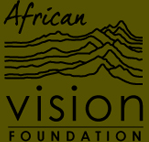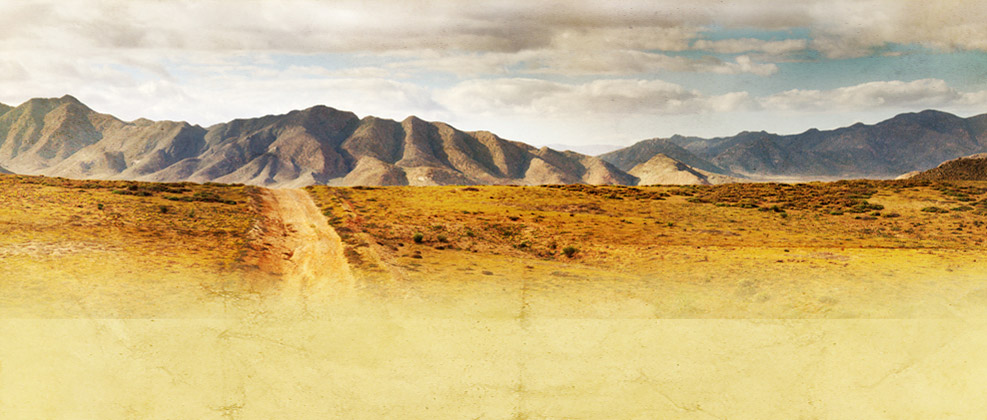
Cape to Karoo via 'Die Hel'
We were told to go to Hell… and we loved it!
What could be better than going on an adventure holiday and helping to uplift some poor communities along the way?
Wait. I have something much better. In fact, I’ve just returned from such an adventure. It involved dirt-trekking through the Karoo with the express goal of helping to uplift rural communities – specifically those situated around areas of natural wealth – with a big, fat adventure holiday attached!
So we four-by-foured a bit, stuck to gravel roads and worse for nearly the entire route, camped at Die Hel, the Mountain Zebra National Park and the Karoo National Park and slept in very comfy beds at Vanwyksdorp, Willowmoor and Nieu Bethesda.
Did I mention Die Hel? Oh, yes. If you have already discovered its charms you will know what is asked of you just to get there. That road around and down the mountains (which, indeed, seems to beckon you down to a hidden and subterranean universe) is something else, isn’t it?
I get vertigo. Badly. I didn’t mention it to Jason, the blast-ahead driver of our Land Cruiser. I chose to keep a manful silence and stared at the cliff-face opposite to the sheer and heart-palpitating airdrop into the valley. We had our moments but, two hours and 20 minutes since leaving the easy-peasy Swartberg Pass behind, we were breathlessly delivered unto Die Hel (the Hell, if you haven’t clocked that yet).
It was worth the guts-in-mouth descent, even for a vertigo-stricken sort such as myself. Beautiful. Beautiful, isolated and, I cannot emphasise it enough, weirdly below the surface of the earth.
We pitched our tents, walked through fields of green (the entire Karoo that we saw was reminiscent of the KZN Midlands such had been the galvanizing effect of summer rains) past quaint cottages lost in time, swam in reservoirs and paddled in rivers, ate like royalty and guffawed like 11 Robin Williamses on laughing gas around the braai… and played cricket.
Ah, the cricket. Cricket – the backyard variety – was a golden thread throughout our 10-day Karoo sojourn and car wheels and rubbish bins and deckchairs were used for stumps.
I doubt that a lot of cricket has been played in Die Hel. In the 1830’s, when farmers in the Prince Albert region found that some of their cattle had gone missing and tracked them over the mountains into the depths of this virgin valley, getting out a bat and ball and thumping sixes into the bush was not at the forefront of their minds.
Instead, they started cutting a track into this verdant piece of heaven that was to become their “Hell” and settled it, creating farmland and building homesteads.
But, due to the inaccessibility of Die Hel, the small community remained almost completely isolated from the outside world until 1963, when a man named Koos van Zyl got on to his bulldozer and almost singlehandedly built a road big enough to carry motor vehicles.
Once the road opened many people opted to head for the “bright lights” of nearby Calitzdorp and Prince Albert, leaving the community to shrink to a mere handful.
So you might be wondering, as I did, how the hell Die Hel got its name? The most popular explanation is that the British tax collectors and/or stock inspectors who had to endure the treacherous voyage there and back in the line of duty named it thus. Or, more likely, The Hell.
But this secretive valley has a special energy about it… and a peace and tranquility in keeping with its seclusion from the far busier world outside. Our African Vision Foundation group camped at the National Parks camping ground and it has every basic requirement, including a couple of more than acceptable showers and toilets.
But, as I hinted at earlier, we were not simply on a big, fat camping-in-the-Karoo holiday. This expedition, as are all those organised by the African Vision Foundation, was designed to raise awareness among deeply rural communities, especially those situated near national parks and game reserves, of their natural environment and the animals which inhabit it. And the highly sensitive state of it. And the need to value and protect it.
This is largely done using the medium of birds, one that is highly visible to people living in these areas with a wealth of avian species.
Each African Vision Foundation visit to a community group comprises of an introductory lesson to basic knowledge and identification of local bird species, awareness of animal spoor through the use of plaster of paris moulds which capture tracks left in the bush, bird art classes and interactive games. The huge problem of littering – and learning how to recycle waste instead – is addressed and the children shown how to make birdfeeders out of old plastic bottles.
Paul Slabbert, who co-ordinates the African Vision Foundation expeditions and projects on behalf of principal sponsors Edward Snell & Co, says that deeply rural communities are "often neglected and missed by tourism and the tourist authorities because of their remoteness and their proximity to more prominent attractions in the area".
"Our intention is help them to be aware of the opportunities offered by conservation and tourism in order to give these very poor communities the means to sustain themselves by working with the rich natural resources right on their doorstep.
Slabbert believes that the Karoo socio-eco expedition, which took the group to settlements near Vanwyksdorp, Bhejane private game reserve (Willowmore), the Mountain Zebra National Park (near Cradock) and the Karoo National Park (outside Beaufort West), had been an outstanding success.
"It is always difficult to gauge how much our lessons spark off an interest in the environment among the kids," he said, "but we certainly built on our network of friends and supporters who will help us to sustain new and existing programmes."
Each child at the four communities visited was given products donated by SEE Foundation sponsors, including a pair of BondiBlu sunglasses, a football, an "I Love Birds" T-shirt and a copy of Africa Birds & Birding magazine.
Elderly people and short-sighted members of the communities were eye-tested and given reading glasses to enable them to resume reading and to re-engage in sewing, knitting and other needlework activities, traditional skills which can then be passed on to the younger generation.
Teachers and community leaders were encouraged to build on the momentum and further mentor the children on issues relating to the environment. The SEE Foundation is committed to returning to those communities visited by the group to monitor the development and growing interest of the children.
Around the educational programme, the 13-strong expedition group were able to enjoy some gems offered by the unique and beautiful Karoo region. A day in the regenerated cultural oasis of Prince Albert was followed by a night spent as guests in the tented camps of Bhejane private game reserve.
Despite a flood which had washed away two of the camps, we were delightfully accommodated in their luxury tents and the group had a blast playing an adapted form of pool which kept us entertained well into the night.
On to the Mountain Zebra National Park and, once we had colonized half of the caravan park and had the statutory game of whack-around cricket, a game drive promised us the elusive leopard but delivered instead the magnificent Cape Mountain Zebra. We were taken to caves where guides pointed out San rock paintings dating back hundreds of years.
Further dirt road bump-and-grind bumped and ground us towards Graaff Reinet and nearby Nieu Bethesda where a highlight of the trip was to be a visit to the mystical Owl House, the product of artist Helen Martins’ flyaway imaginings.
A "vleis en pap" dinner at the one and only "Antie Evelyn’s Eetplek", where we were treated to a stirring Xhosa dance by a group of children preceded a morning spent presenting the African Vision Foundation programme at the local Lettie de Klerk Primary School.
It was heartening to be proudly shown the vegetable garden nurtured by hardworking ladies who feed a community of 1,300 people each day with the produce that they grow. Heartening and saddening, as these hardy souls keep the vege garden going with barely any finances available to them.
Our long and winding roughroad route then took us to Beaufort West where we spent two replenishing days at the splendid Karoo National Park before starting the long drive back home to various points in the Western Cape.
How wonderful to share an experience such as this with likeminded people who so covet the opportunity to enjoy an adventure while uplifting the lives of disadvantaged people at the same time. I cannot wait to be given the gift of the next African Vision Foundation expedition, scheduled to be to the region of the Kgalagadi Park in Spring.








